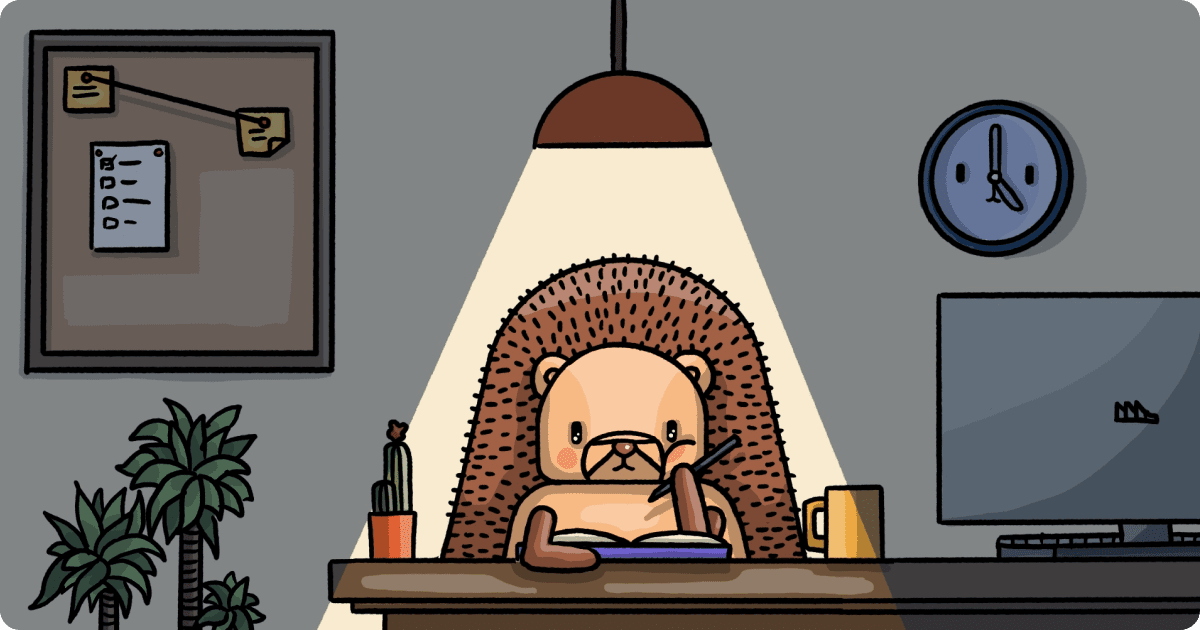
"How come your website is so nice?"
Contents
I've been asked this three times today, so I thought I'd explain it from a founder's perspective. This is what I've learned so far.
Figure out if design matters
PostHog follows bottom-up adoption. This means our users find us online, install, hopefully add their team and then reach out to buy our paid version. We're very different from our competitors in this way.
This means that design is key. Our website and product are our storefront - not a sales team. It needs to be one of our core competencies.
Good design for product-led companies on your "marketing" website (for lack of a better word) signifies a high quality product experience. Accept that you'll be judged, and use this to your advantage.
Hiring the right people - what Stripe taught me
One of my most memorable moments as a founder was a 30 minute chat with Malthe Sigurdsson - he used to run design at Stripe. For the uninitiated - people drool over Stripe's design quality - especially their docs. I wanted to know how they got there.
Apart from him telling me that he'd be a bad hire for us when we met originally, he also told me:
- Great designers iterate quickly. You won't get it perfect in Figma first.
- Hire generalists early on.
We followed his advice. We made sure we had people that could work in Figma or CSS, and who'd be able to understand our audience. We got some pushback in the hiring process that we were unicorn hunting, and it took months, but we'd do everything the same way all over again.
Treat your website as a product, but not at first
We see so many websites, it's easy to build on autopilot... Before you know it you're Googling "how to center a div in a div", and adding testimonials and calls to action.
This is a good way to get something mediocre built very fast - which is exactly what you want on day one.
Once you've got some consistency and a sense of brand, start thinking from a user's perspective. This is what we did to think of our website and docs as a product:
- Start with why: We thought about our mission and our motivation for building a website and docs to help us achieve it.
- Ask who it's for: We broke down the people who might come to our website/docs into segments and prioritized the biggest opportunities, trying to use qualitative and quantitative data where we could.
- Consider what they need: We looked at the focus segment and what their needs from our website and docs were. We asked which needs were the most important to solve, again using qualitative and quantitative data where we had it.
- Plan how to solve needs: We brainstormed potential solutions to the highest priority needs.
You can go even further - what do acquisition, activation, retention, referral and revenue look like for your website or your docs? Then you know you're actually solving needs.
This exercise is taking us in some really innovative directions.
Think about patterns carefully
We provide open source product analytics. That means our users have to put some work in to try out PostHog. Do you want to put work into flakey software? No.
Therefore the first version of our website avoided these patterns:
- Stock doodles that every startup uses (we avoided this, and hired a graphic designer as early as we could).
- Single landing-page where the links take you to an anchor link on the same page (we had >50 pages when we launched).
Don't treat implementation as a second-class citizen
Great design is irrelevant without implementation. The better you are at getting things merged easily, the more steps you'll take and the further you'll go.
As we got stronger at implementation, we found we could push for far more - we have complete confidence we can execute. Get design to show off what they're working on internally, just as engineering would.
Iterate
You aren't going to get it right on the first go. Be happy chopping and changing - the long term result will be better, and no one cares about brand consistency in your first year. You'll create a better brand by doing, and applying what you learn about your users.
Get comfortable
Many of the best things you can work on are hard to measure - that's why they're opportunities; no one else wants to do them. Investing in design is like this.

Subscribe to our newsletter
Product for Engineers
Read by 100,000+ founders and builders
We'll share your email with Substack
PostHog is an all-in-one developer platform for building successful products. We provide product analytics, web analytics, session replay, error tracking, feature flags, experiments, surveys, LLM analytics, data warehouse, CDP, and an AI product assistant to help debug your code, ship features faster, and keep all your usage and customer data in one stack.









